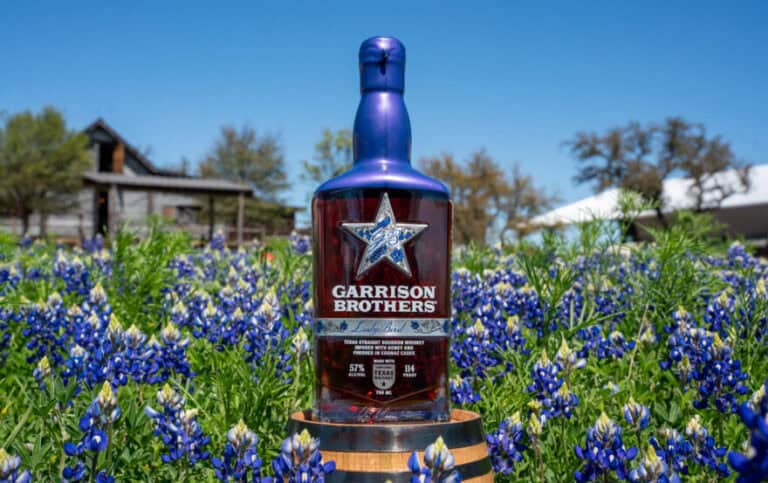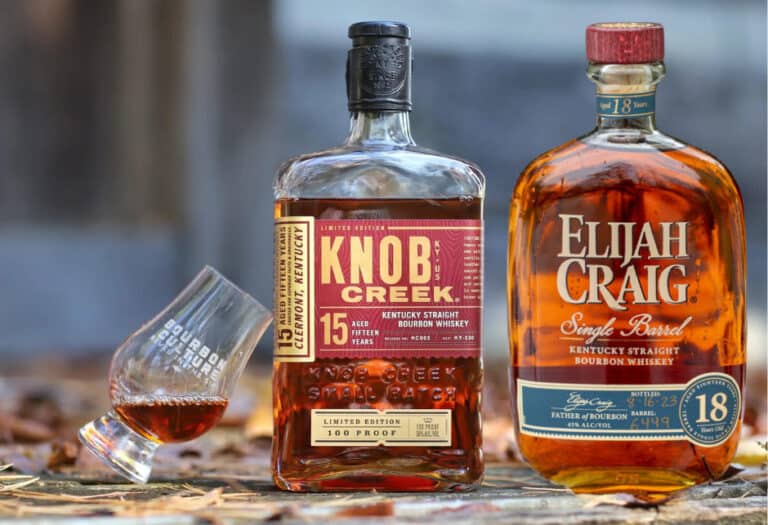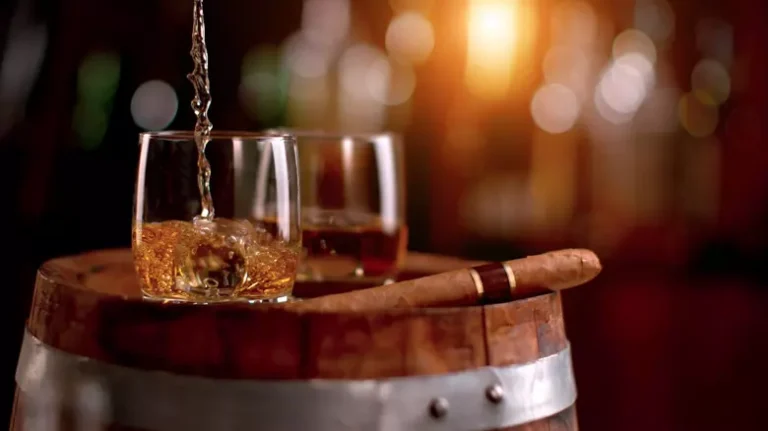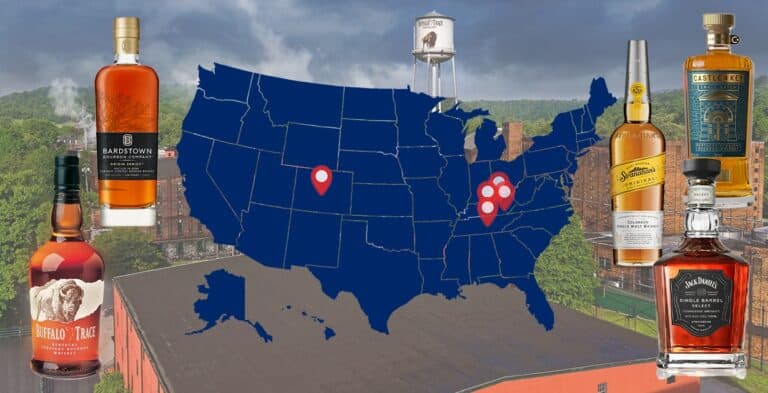Comparative Analysis of Bourbons
Bourbon is more than just a type of whiskey; it’s a rich tradition, a symbol of American heritage, and a complex spirit with a myriad of variations. As someone who loves exploring the world of bourbon, I’ve delved into the intricacies of this beloved drink. In this article, we’ll uncover the differences between Kentucky Bourbon and Tennessee Whiskey, the nuances of small batch vs. single barrel bourbons, and the contrasting flavors of aged and young bourbons.
Whether you’re a seasoned bourbon enthusiast or a curious newcomer, this guide will provide a thorough comparative analysis of bourbons to enhance your appreciation of this timeless spirit.

Kentucky Bourbon vs. Tennessee Whiskey
When it comes to bourbon, many immediately think of Kentucky, but Tennessee whiskey also holds a significant place in the world of whiskey. While they may seem similar at first glance, there are notable differences between the two.
Key Differences
The primary distinction between Kentucky Bourbon and Tennessee Whiskey lies in their production processes and geographical origins. Kentucky Bourbon is a type of American whiskey that must be made primarily from corn (at least 51%) and aged in new charred oak barrels. Tennessee Whiskey, on the other hand, follows the Lincoln County Process, where the whiskey is filtered through charcoal before aging. This additional step imparts a distinct smoothness to Tennessee Whiskey.

Another key difference is the regional influence. Kentucky’s limestone-rich water and climate conditions contribute to the unique flavor profile of its bourbon. In contrast, Tennessee’s use of charcoal mellowing creates a smoother, slightly sweeter whiskey.
Flavor Profiles
The flavor profiles of Kentucky Bourbon and Tennessee Whiskey reflect their production differences. Kentucky Bourbon typically offers a robust, full-bodied flavor with notes of caramel, vanilla, oak, and sometimes a hint of spice. The aging process in new charred oak barrels contributes to its rich and complex taste.
Tennessee Whiskey, due to its charcoal filtering, tends to be smoother and mellower. It often features a softer flavor profile with more pronounced notes of caramel and vanilla, accompanied by a subtle smokiness. This makes Tennessee Whiskey particularly appealing to those who prefer a gentler whiskey experience.
Production Process
The production process of these two types of whiskey highlights their key differences. Kentucky Bourbon follows a straightforward process: the mash, made from at least 51% corn, is fermented, distilled, and then aged in new charred oak barrels. The charring of the barrels caramelizes the sugars in the wood, which infuses the whiskey with rich flavors.
In contrast, Tennessee Whiskey undergoes an additional step known as the Lincoln County Process. After distillation, the whiskey is filtered through charcoal made from sugar maple wood. This filtration process, also known as charcoal mellowing, can last up to ten days and contributes to the whiskey’s smooth and mellow character.
Cultural and Historical Significance
Both Kentucky Bourbon and Tennessee Whiskey hold significant cultural and historical value. Kentucky Bourbon is often associated with the American frontier and the early settlers who crafted this spirit from the abundant corn crops. It symbolizes American ingenuity and craftsmanship.
Tennessee Whiskey, while similar in many ways, carries its own distinct heritage. It is closely tied to the state of Tennessee and its traditions. The Lincoln County Process, for instance, is a nod to the region’s unique approach to whiskey-making.
Small Batch vs. Single Barrel
Another fascinating aspect of bourbon is the distinction between small batch and single barrel productions. These terms often appear on bourbon labels, but what do they really mean?

Small Batch Bourbons
Small batch bourbons are crafted by blending a select number of barrels, typically ranging from 10 to 50, to create a specific flavor profile. This method allows distillers to produce a consistent taste while incorporating unique characteristics from each barrel. Small batch bourbons often strike a balance between quality and availability, making them a popular choice among bourbon enthusiasts.
Small batch production provides distillers with more control over the final product. By selecting barrels that complement each other, they can craft a well-balanced bourbon with desired flavors and characteristics. This careful selection process often results in a richer, more complex bourbon compared to mass-produced options.
Single Barrel Bourbons
Single barrel bourbons, as the name suggests, come from a single, individually selected barrel. Each barrel can impart different flavors based on its aging conditions, resulting in a unique and often unpredictable whiskey. This means that no two single barrel bourbons are exactly alike. The individuality of single barrel bourbons appeals to those who seek a one-of-a-kind tasting experience.
Single barrel bourbons are prized for their uniqueness and the story each bottle tells. Because each barrel ages differently, influenced by its position in the warehouse and the surrounding environmental conditions, the flavor profile can vary significantly from one barrel to another. This variation makes single barrel bourbons a favorite among collectors and connoisseurs.
Quality and Availability
Both small batch and single barrel bourbons are associated with higher quality compared to mass-produced bourbons. The careful selection and blending process for small batch bourbons ensure a superior product, while the unique characteristics of single barrel bourbons offer an exclusive tasting experience.
However, availability can be a challenge for both types. Small batch bourbons, due to their limited production, may be harder to find compared to regular bourbons. Single barrel bourbons, being unique to each barrel, are often produced in very limited quantities, making them a sought-after item for bourbon enthusiasts.
Aged Bourbons vs. Young Bourbons
The aging process plays a crucial role in shaping the flavor and character of bourbon. The duration for which bourbon is aged can significantly influence its taste, complexity, and overall quality.

Aged Bourbons
Aged bourbons are typically matured for a longer period, often ranging from 6 to 12 years or more. During this time, the whiskey absorbs flavors from the charred oak barrels, resulting in a deeper, more complex profile. Aged bourbons often exhibit rich notes of caramel, toffee, vanilla, and sometimes a touch of smokiness. The extended aging process also allows for a smoother and more refined finish.
The longer aging process allows the bourbon to develop a more sophisticated flavor profile. The interaction between the whiskey and the charred oak barrels over several years results in a more pronounced and complex taste. The depth of flavors in aged bourbons makes them highly desirable among connoisseurs.
Young Bourbons
Young bourbons, on the other hand, are aged for a shorter period, usually between 2 to 4 years. These bourbons tend to have a lighter and more vibrant flavor profile. While they may lack the depth and complexity of aged bourbons, young bourbons offer a fresh and lively taste with prominent corn sweetness and subtle hints of oak and spice. They are often favored for cocktails due to their bright and approachable flavors.
Young bourbons are known for their bold and straightforward flavors. The shorter aging period means they retain more of the original corn sweetness and grain characteristics. This makes them an excellent choice for mixing into cocktails where a vibrant and lively bourbon is desired.
Impact on Price
The aging process not only affects the flavor and quality of bourbon but also its price. Aged bourbons, due to the extended time they spend in barrels and the careful selection process, are often more expensive than young bourbons. The cost reflects the investment in time and resources required to produce a high-quality aged bourbon.
Young bourbons, being more readily available and quicker to produce, tend to be more affordable. They offer a cost-effective option for those looking to enjoy bourbon without the premium price tag of aged varieties.
Flavor Complexity
The complexity of flavors in bourbon is largely influenced by the aging process. Aged bourbons develop deeper, more layered flavors over time. The interaction with the charred oak barrels allows for the gradual infusion of vanilla, caramel, and spice notes, resulting in a sophisticated and well-rounded profile.

Young bourbons, while not as complex, offer a different kind of appeal. Their fresh and vibrant flavors make them approachable and enjoyable, especially for those new to bourbon. The pronounced corn sweetness and lighter oak influence provide a straightforward and enjoyable tasting experience.
Conclusion
In the diverse world of bourbon, there are countless variations and unique characteristics to explore. From the geographical and production differences between Kentucky Bourbon and Tennessee Whiskey, the distinct methods of small batch vs. single barrel, to the contrasting flavors of aged and young bourbons, each type of bourbon offers a unique experience. As someone who appreciates the complexity and craftsmanship of bourbon, I find joy in uncovering these nuances and sharing them with fellow enthusiasts. Whether you prefer the robust and full-bodied flavor of Kentucky Bourbon or the smooth and mellow notes of Tennessee Whiskey, there’s a bourbon out there for everyone to enjoy.
FAQs
Disclosure: Our blog contains affiliate links to products. We may receive a commission for purchases made through these links. However, this does not impact our reviews and comparisons. We try our best to keep things fair and balanced, in order to help you make the best choice for you.






